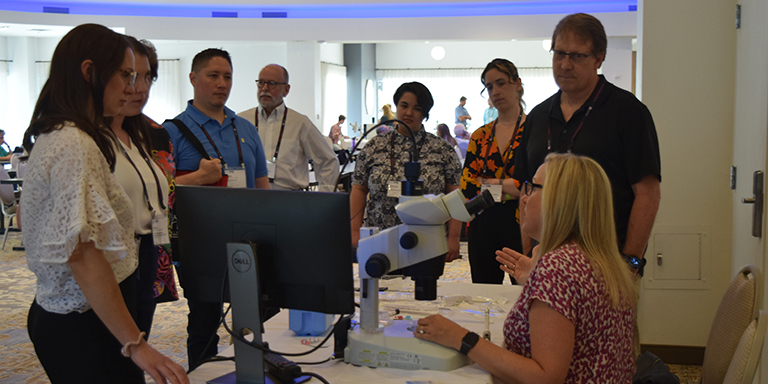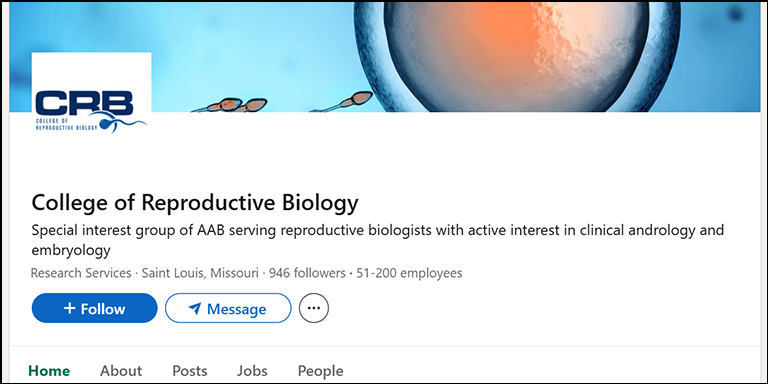
Newsletter
The College of Reproductive Biology (CRB) is a not-for-profit special interest group of the American Association of Bioanalysts (AAB).
Recent CMS/CLIA Changes to Proficiency Testing Requirements
On July 11, 2024, revisions that impact PT requirements of some clinical laboratories went into effect. These revisions include the addition of 29 newly regulated analytes (Table 1), the removal of five previously regulated analytes (Table 2), and changes to the grading and reporting of PT challenges (Table 3). The changes cover regulations §§ 493.2 and 493.801 through 493.959 and are based on a Centers for Medicare & Medicaid Services (CMS) Proficiency Testing Final Rule (CMS-3355-F). Based on this rule, other changes will take place in 2025, and some changes took place on August 10, 2022 (Table 4). This is the first update to the CLIA 1988 PT regulations since its inception in 1992. For greater detail, please refer to the CMS rule, published on 7/11/22.
Table 1. Twenty-nine newly regulated analytes
| CLIA Regulation | Analytes Affected |
|---|---|
| General Immunology §493.927 |
Anti-HBs Anti-HCV C-reactive protein (high sensitivity) |
| Routine Chemistry §493.931 |
B-natriuretic peptide (BNP) Pro-BNP Cancer antigen (CA) 125 Carbon dioxide Carcinoembryonic antigen (CEA) Cholesterol, Low Density Lipoprotein (LDL), direct measurement Ferritin Gamma glutamyl transferase (GGT) Hemoglobin A1C Phosphorus Prostate specific antigen, total (PSA) Total iron binding capacity (TIBC), direct measurement Troponin I Troponin T |
| Endocrinology §493.933 |
Estradiol Folate, serum Follicle stimulating hormone (FSH) Luteinizing hormone (LH) Progesterone Parathyroid hormone (PTH) Testosterone Vitamin B12 |
| Toxicology §493.937 |
Acetaminophen, serum Salicylate Vancomycin |
Table 2. Five analytes removed from Subpart I.
| LDH isoenzymes |
| Ethosuximide |
| Quinidine |
| Primidone |
| Procainamide (and its metabolite, N acetyl procainamide) |
Table 3. Criteria for Acceptable Performance.
| Most limits were changed from standard deviations to percentage-based limits |
Fixed concentration units were added to fixed percentage units to address lower concentrations. For example:
|
Table 4. Key Dates for Some Laboratories.
| January 1, 2025: Implementation date for the PT requirements for both PT vendors and laboratories. |
| July 11, 2024: Effective date for the PT requirement revisions that include the additions of 29 new regulated analytes, the removals of five regulated analytes, and changes to grading and reporting. (Regulations §§ 493.2 and 493.801 through 493.959.) |
| August 10, 2022: CMS clarified that PT referral regulations apply to waived testing as well as non-waived testing when a moderate- and high-complexity laboratory chooses to perform PT for waived tests. (Regulations §§ 493.20 and 493.25.) |
FDA Imposes New Regulations on Laboratory Developed Tests ⇒
CRB News Articles
07/18/2024
Vol 13, No. 1
07/18/2024
Introduction from the CRB President
07/18/2024
2024 CRB Symposium Recap
07/18/2024
Wishing Tammie Schalue a Happy, and Well-Deserved, Retirement
07/18/2024
Laboratory Management and Leadership Development Workshop
07/18/2024
Revolutionizing IVF Success: The Role of AI in Enhancing Key Performance Indicators
07/18/2024
CLIA Registration Fees are Increasing
07/18/2024
Recent CMS/CLIA Changes to Proficiency Testing Requirements
07/18/2024
FDA Imposes New Regulations on Laboratory Developed Tests
07/18/2024
2025 Symposium Dates & Location
07/18/2024
California Recognizes Clinical Reproductive Biologists with the Passage of Senate Bill 1267
07/18/2024
Earn ABB/PEER CE Credit by Attending ASRM!
07/18/2024
Andrology Antics by Samuel Prien, Ph.D., HCLD(ABB)
07/18/2024
A special thanks to the CRB Publication Committee members:
CRB Standing Rules - Log in to view



